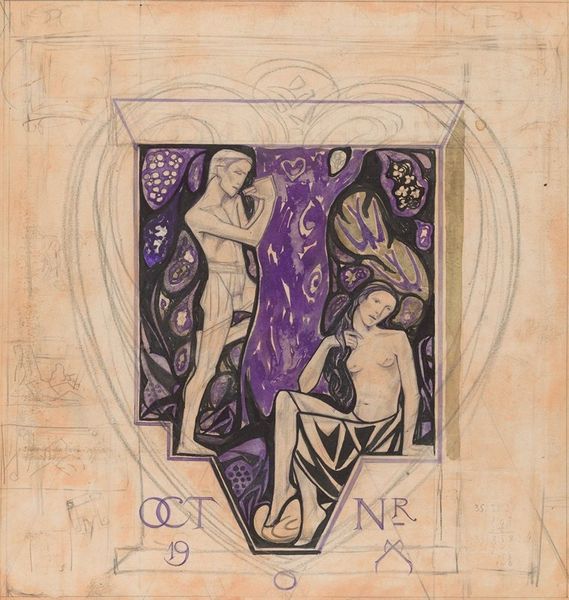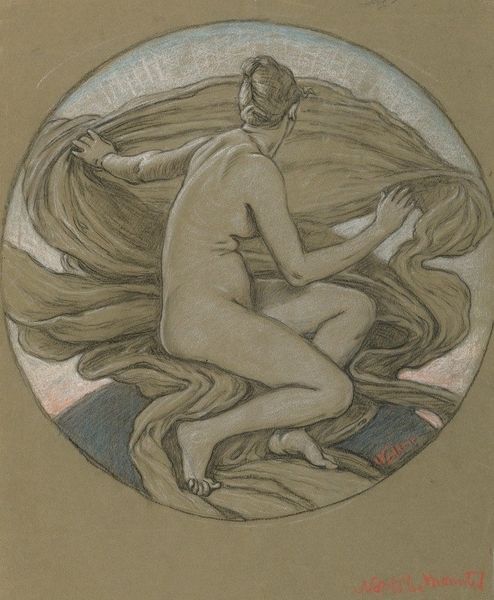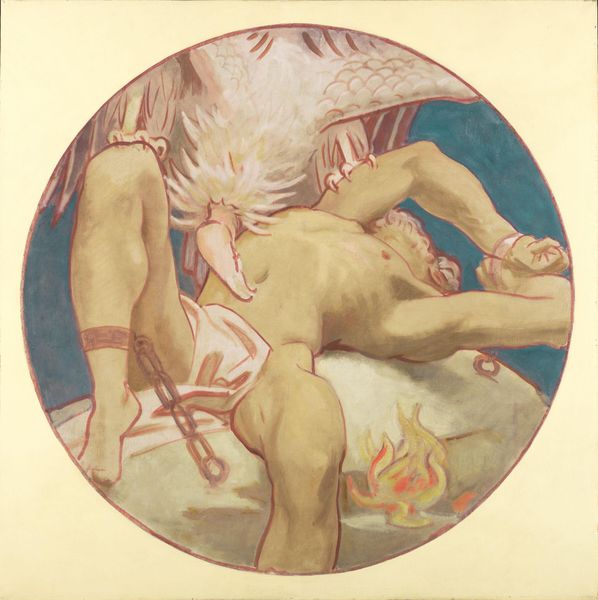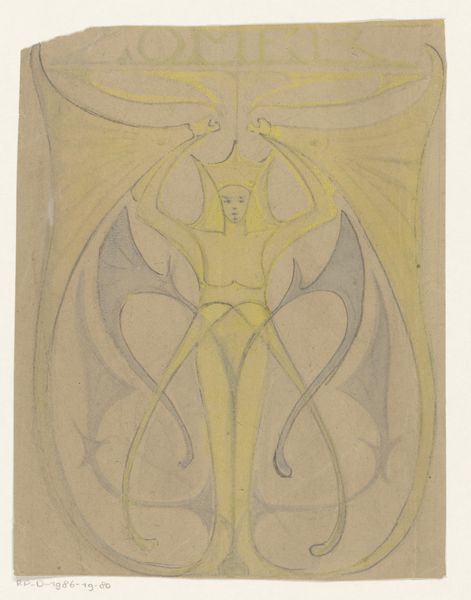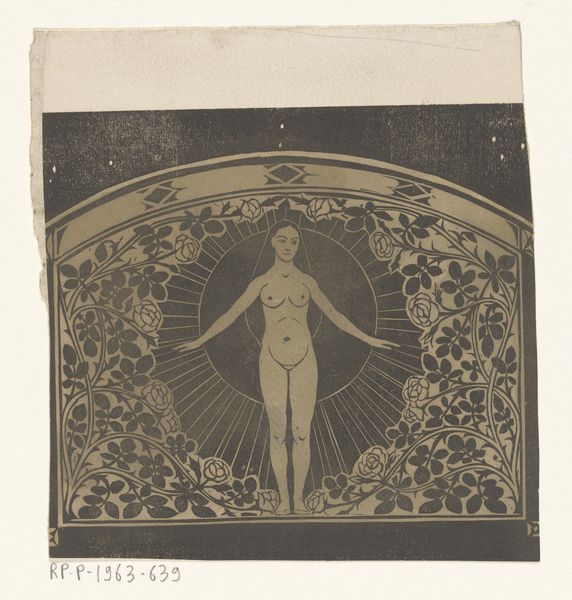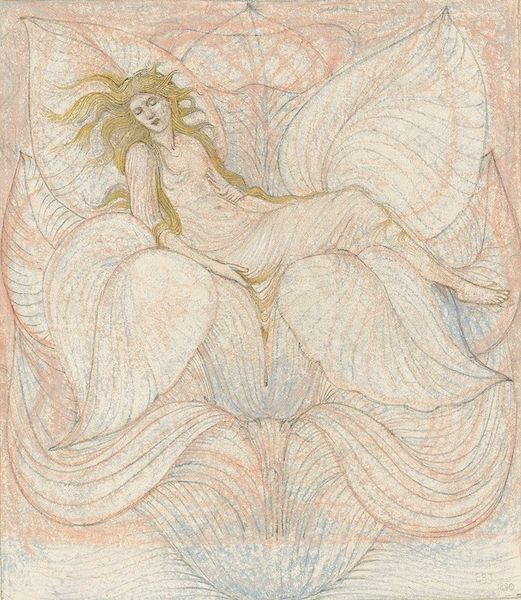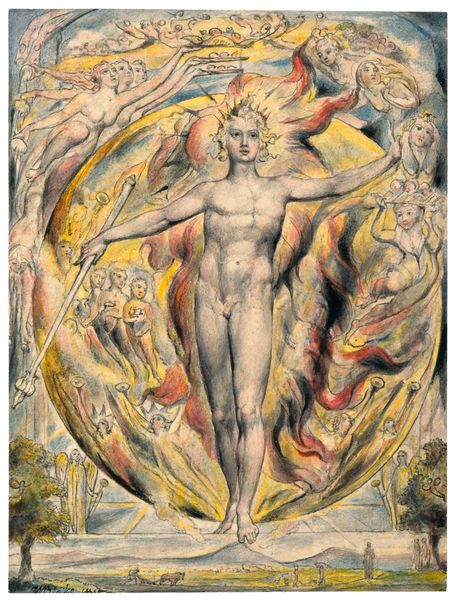
drawing, pastel
#
drawing
#
figuration
#
pencil drawing
#
symbolism
#
pastel
#
academic-art
#
nude
Copyright: Public Domain: Artvee
Curator: The pastel and pencil drawing before us is Elihu Vedder's "Study for Luna," created around 1893. My immediate impression is of something unfinished, fleeting—almost a dreamscape. Editor: The central figure of Luna carries with her the weight of female deities—the nude figure bathed in soft light, draped by flowing cloth that mimics wings; this carries ancient weight across civilizations of powerful moon goddesses. Ishtar, Selene, and even Diana each represent archetypes deeply embedded in our cultural consciousness. Curator: Notice the fan-like composition and how Vedder arranged the figures. I see Luna elevated and centered, framed by two attending figures on either side—are those handmaidens, or perhaps aspects of the moon itself, its waxing and waning phases? The pale pastel colors certainly add to this lunar feel. Editor: Perhaps a study of contrasts, actually, considering the sword present alongside her. She may also be the lunar Diana. Consider the crescent moon resting on her head, itself a traditional symbol for deities representing hunting and chastity. The drawing itself seems unfinished in a manner that evokes constant change, cyclical renewal. It makes us confront our shifting understanding of feminine power across different mythologies. Curator: Vedder’s application of both pastel and pencil is subtle. There is an underlayer of darker graphite beneath brighter swaths of pastels, creating depth and atmospheric perspective within the composition despite the unfinished appearance. Editor: That layering of textures absolutely reinforces how symbolism carries across visual arts! Vedder used techniques to both conceal and reveal layers of meaning. Luna is always a hidden presence and our perceptions constantly fluctuate from darkness to illumination to obscurity. Curator: Yes, and this drawing shows how Vedder explored themes found in the broader Symbolist movement of the late 19th century, suggesting veiled meanings and dreamlike states. He's less concerned with literal representation, than accessing deeper psychic landscapes. Editor: He also prompts the viewer to reconsider visual conventions over time; Luna invites us all to reflect critically upon this lineage of representations while acknowledging how artistic interpretations perpetuate a shared narrative through symbolism. Curator: A drawing about light, shadow, and enduring symbolism. Editor: Evoking continuity across different mythological spaces.
Comments
No comments
Be the first to comment and join the conversation on the ultimate creative platform.
